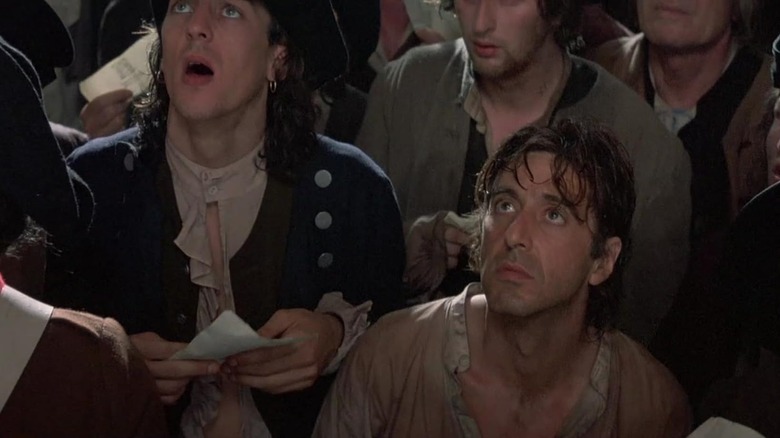Between 1971 and 1983, a brand new Al Pacino efficiency was an occasion … more often than not. Nobody was excited to see Pacino comply with up the supercharged “Cruising” by enjoying a stressed-out papa in Arthur Hiller’s abominable 1982 household dramedy “Writer! Writer!” Apart from that, there was at all times the promise of greatness with Pacino, whether or not offered within the type of “Panic in Needle Park” or “Scarface.” And when your peak is “Canine Day Afternoon” and/or “The Godfather Half II,” that is pure, transcendent craft.
There was, nonetheless, a rising sense with Pacino across the time he did the controversial “Scarface” that the actor was eschewing nuance and depth for scenery-devouring showmanship. His Tony Montana was the end result of an inclination in the direction of growling and gesticulating (which started in movies like “…And Justice for All” and “Cruising”), topped off with a thick Cuban accent. It is a towering efficiency, nevertheless it’s additionally one which proved troublesome for him to shed. The seeds of his “hoo-hah” Nineties have been planted right here.
Pacino would possibly’ve performed properly to take a while off after “Scarface,” however he as an alternative hurled himself right into a historic conflict epic that referred to as for a stage of bodily and emotional dedication that was each bit the equal of what he poured into the Brian De Palma gangster traditional. The potential payoff of raves and awards, coupled with merely the satisfaction of getting performed nice work in an amazing film, was an excessive amount of for him to show down. He would come to remorse his resolution.
How Al Pacino misplaced the Revolution
The conflict movie is a permanent, fashionable style, so it is unusual that the American Revolution has been so not often visited all through the medium’s historical past. On a superficial stage, it is received a way more upbeat final result than the Vietnam Struggle, but the latter has been grist for a lot of extra motion pictures.
Producer Irwin Winkler was struck by this within the early Eighties, so he determined to treatment this underrepresentation by making a grand Independence epic with “Revolution.” Moderately than inform the story from the attitude of the founders, Winkler went with a script by the underrated Robert Dillon (“Prime Minimize,” “French Connection II”) that centered on the experiences of a father (Pacino) and son (Dexter Fletcher) caught up within the tumult of a colonial rebellion. Curiously, Winkler tapped a Brit, Hugh Hudson, to direct this American story, however nobody batted an eye fixed as a result of the filmmaker had helmed Greatest Image-winner “Chariots of Hearth” and the critically acclaimed “Greystoke: The Legend of Tarzan.” With Pacino on board, it was anticipated to be a serious awards contender.
Finally, Hudson’s “Revolution” was a quiet fiasco. Although it was a far greater field workplace catastrophe than infamous flops like “Ishtar” and “Cutthroat Island” (grossing a paltry $346,761 on a $28 million price range) and drove Pacino to take a four-year break from performing, it is not often mentioned. Why? As a result of it is so crushingly boring and devoid of behind-the-scenes turmoil (except for Goldcrest dashing the movie into manufacturing with no polished screenplay) there’s not a lot to speak about. Sure, The New Yorker’s Pauline Kael referred to as it a “loony image” that is “so dangerous it places you in a state of shock,” however that is wild hyperbole. Its Metacritic ranking might be too low at 22, however good luck discovering somebody to throw down in its protection.
Hudson recut “Revolution” in 2009, excising 10 minutes from the run time, and, properly, shorter is healthier. It is nonetheless unfocused and staid, however you’ll be able to see the glimmers of one thing nice. Pacino completists and historians ought to have a look. Everybody else ought to take a look at one of the best Revolutionary Struggle movie at present in existence: John Ford’s “Drums Alongside the Mohawk.”


